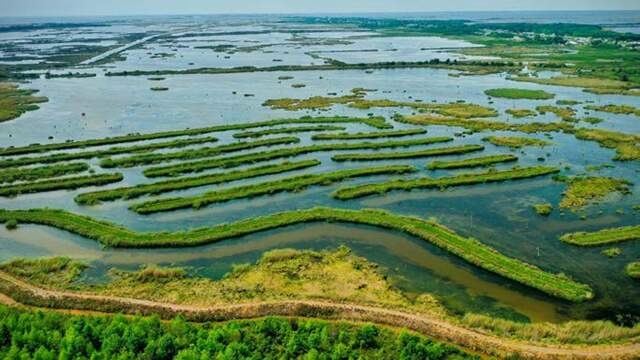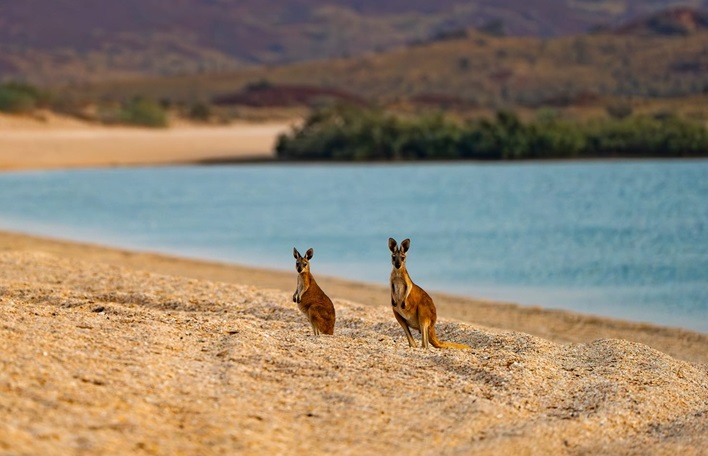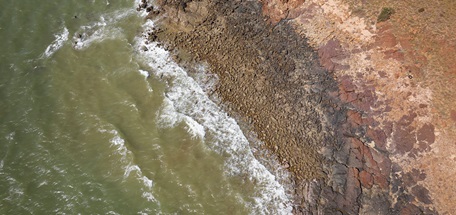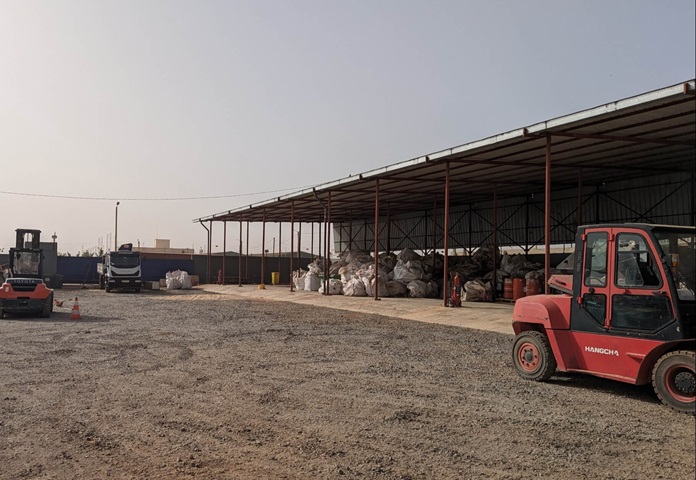Under the Woodside Management System we have developed a water resource management framework to provide guidance on the management of shared water resources through risk-based assessment and systematic decision-making processes across Woodside’s operated activities. The framework provides for strategic management of water risks at all phases of a development life cycle. Each development is screened to provide a high-level understanding of the holistic water challenges within the region, potentially significant water related risks including water security, business continuity/growth potential, regulatory environment, environment impacts, reputational and social license and legal compliance.
Where significant water risks have been identified, projects and assets will develop a water resource management plan (WRMP). The WRMP will focus on establishing water reduction targets and demonstrating the application of the water resource mitigation hierarchy to prioritise water management in accordance with the principles of eliminate, alternatives, reduce, reuse, recycle, dispose and enhance. Enhancement, notably, allows for operations to invest in initiatives that deliver improved water outcomes and reduce stress on water catchments.
Fresh water use
Our Burrup facilities (Karratha Gas Plant, Pluto LNG and King Bay Supply Base) prepare and submit Water Efficiency Management Plans (WEMPs) to the Western Australian Water Corporation each year. The annual WEMPs report includes total water use, along with efficiency, by comparing to total business production for the gas plants and total bunkered water from King Bay Supply Base (KBSB) to supply offshore facilities.
Water efficiency actions are set at five-year intervals and reported against each year. These include items such as periodic inspections of water related infrastructure, as well as ongoing identification, maintenance and repair of leaks. The five yearly updates to the WEMPs for our Burrup facilities were completed in 2023.
Information about our fresh water use is available in our environment data table.
Woodside is committed to seek and where feasible, apply innovative techniques in designing its facilities to minimize or eliminate the need for fresh water use during operations of our future new energy projects. One illustration of this is the H2OK facility proposal, which demonstrates a holistic approach to water management. Under the proposal the project would leverage industrial/process wastewater from the City of Ardmore through an under-ground pipeline system. Upon arrival at the facility, the wastewater would undergo a simple water treatment process to meet equipment specifications. Woodside is focusing on improving our water practices, acknowledging the significance and intrinsic value of freshwater as a vital shared resource.
Produced water
Produced water discharge is a planned activity with one of the higher environmental risks arising from Woodside’s offshore production assets. One of the challenges of understanding and managing produced water impacts is the potential for increased environmental impact from changes over time in fluid characteristics such as volume, chemical composition or process chemicals used.
To allow us to better understand and appropriately manage produced water discharges in Australia, Woodside has developed a risk based, adaptive management framework that re- assesses changing conditions. Real time and novel monitoring of key indicators are utilised as part of ongoing compliance verification and triggers an adaptive response. The adaptive framework manages produced water discharges across a range of producing facilities, with varied chemical composition and treatment technologies, through a robust and consistent approach.
Some of Woodside’s offshore assets in Western Australia discharge produced formation water. Regulations permit this under strict conditions. In 2022, Woodside undertook a comprehensive field water quality and sediment monitoring program which has verified compliance against these conditions and demonstrate our operational controls are effective in meeting the environmental performance objectives for discharge of produced water. This provides verification of the effectiveness of the implemented controls over the life of the asset.
Our international operations assets are also required to meet strict regulatory permit conditions for produced water. Due to this requirement, we closely monitor volume and quality of water discharged via our environmental tracking system, thereby giving visibility to the business on our monitoring and reporting activities. This informs and helps the business take proactive measures to mitigate any potential parameters that may exceed its discharge criteria.
Our Trinidad and Tobago assets undertake a comprehensive annual monitoring program that includes an effluent, produced water sediment monitoring and sampling program to demonstrate operational controls are effective in meeting the environmental permits conditions.
.tmb-v2-card.jpeg?sfvrsn=63cd1e14_1)


-web.tmb-imggridl.jpeg?sfvrsn=c9428b66_3)




-web.tmb-imggridl.jpg?sfvrsn=af8b67b0_3)


-web.tmb-v2-card.jpeg?sfvrsn=ecdc816c_3)




